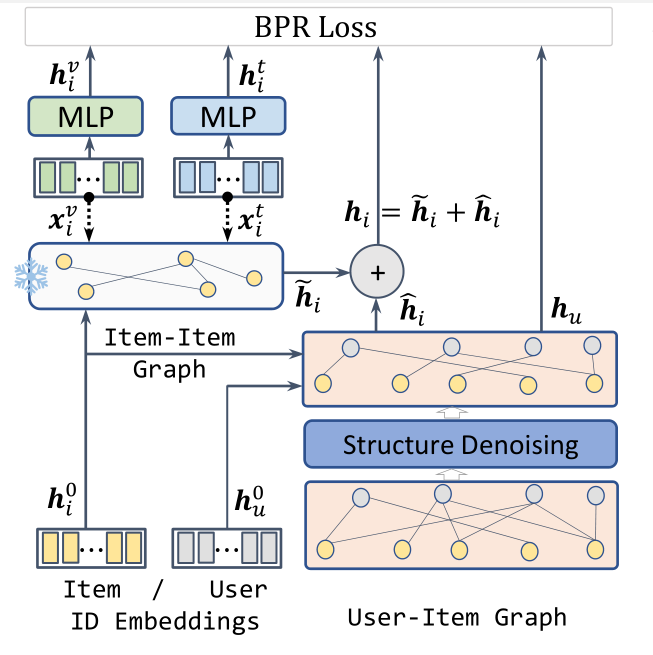A Tale of Two Graphs: Freezing and Denoising Graph Structures for Multimodal Recommendation
Multimodal recommender systems utilizing multimodal features (e.g., images and textual descriptions) typically show better recommendation accuracy than general recommendation models based solely on user-item interactions. Generally, prior work fuses multimodal features into item ID embeddings to enrich item representations, thus failing to capture the latent semantic item-item structures. In this context, LATTICE proposes to learn the latent structure between items explicitly and achieves state-of-the-art performance for multimodal recommendations. However, we argue the latent graph structure learning of LATTICE is both inefficient and unnecessary. Experimentally, we demonstrate that freezing its item-item structure before training can also achieve competitive performance. Based on this finding, we propose a simple yet effective model, dubbed as FREEDOM, that FREEzes the item-item graph and DenOises the user-item interaction graph simultaneously for Multimodal recommendation. Theoretically, we examine the design of FREEDOM through a graph spectral perspective and demonstrate that it possesses a tighter upper bound on the graph spectrum. In denoising the user-item interaction graph, we devise a degree-sensitive edge pruning method, which rejects possibly noisy edges with a high probability when sampling the graph. We evaluate the proposed model on three real-world datasets and show that FREEDOM can significantly outperform current strongest baselines. Compared with LATTICE, FREEDOM achieves an average improvement of 19.07% in recommendation accuracy while reducing its memory cost up to 6$\times$ on large graphs. The source code is available at: https://github.com/enoche/FREEDOM.
PDF Abstract



